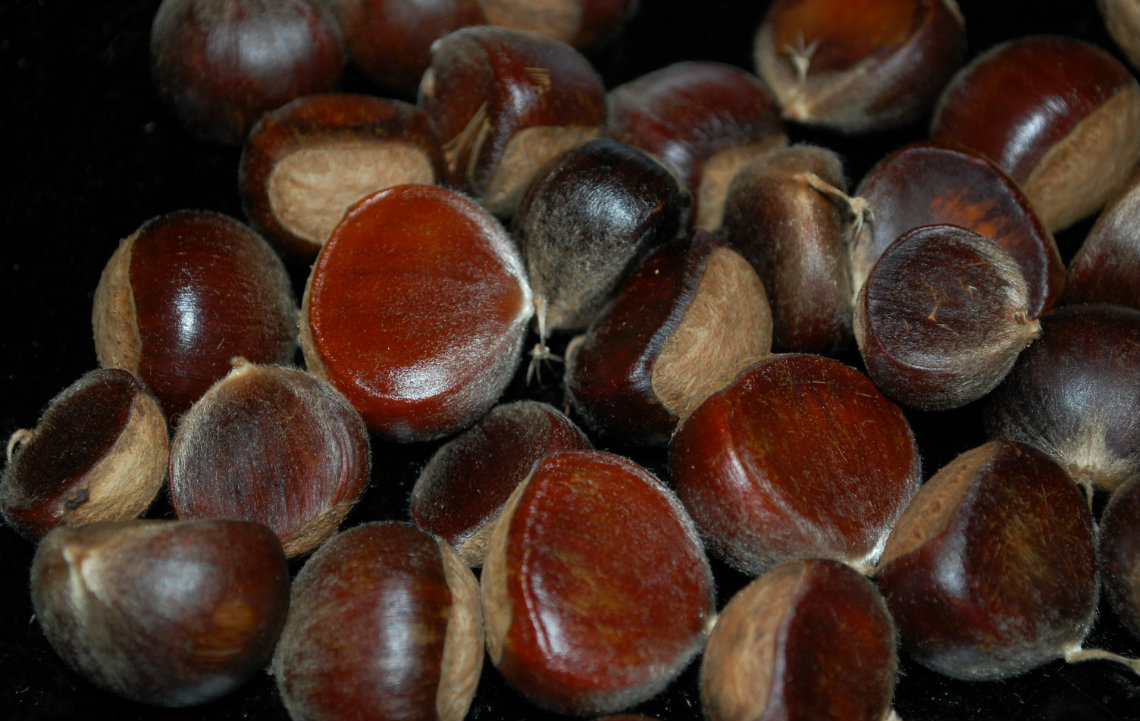Do the lyrics, “Chestnuts roasting on an open fire” instantly put you in the Christmas mood, or is it just me? It could be the middle of October but if I hear that line, BAM! Instant Christmas.
Everyone knows that line from “The Christmas Song” but when’s the last time you actually saw a chestnut? What about a chestnut tree? Up until about a month ago I thought I had never seen one - but I was wrong. Thanks to my husband’s recent tree obsession we discovered that we’ve had two chestnut trees in our neighborhood for years. We did a little research and in the process fell in love with our property even more.
Back in the late 1800s the American chestnut tree was one of the most common and important trees in the Eastern United States. They could be easily found from Northern Florida to Southern Maine and west into Tennessee and Ohio. These trees boasted beautiful, bright green leaves; had trunks with a diameter of more than 10 feet; and easily grew to heights upwards of 100 feet. The wood from the chestnut tree was fairly light but strong and easy to work with. It was used to make fence posts, furniture and building materials for homes, and its high level of tannic acid kept it from rotting longer than most woods. The nuts themselves were an important source of food for people as well as livestock and wildlife. Native Americans used parts of the trees to treat whooping cough, heart conditions and chafing skin.
Some information sources say that at one point in time chestnut trees were just as common in the south as pecan trees. I can remember when I was a little girl, one of our chores each fall was picking up pecans on our family farm. We’d bundle up against the cold (well, 50 degrees was frigid to a little Southern girl) and would watch the big shaker machines shake the nuts out of the trees before we’d crawl around on our hands and knees picking them up. Some of the best daydreams I ever had were under those pecan trees. I’d lay on my back and gaze up through the leaves at the soft sun and just let my mind wander …… Some of the best spankings I ever had were under those pecan trees too. Seems I did more daydreaming than pecan-picking. There were little orchards of pecan trees dotting the landscape everywhere you looked - but I never remember seeing or even hearing anyone mention chestnuts. So what happened? Where did they all go?
In 1904 a chestnut blight fungus was brought into the United States on some trees being imported into New York. It quickly spread and wiped out the entire range of American chestnut trees by the 1940s. Newly sprouted trees were reinfected with the blight and never matured older than just a few years. That was the end of an era for the mighty chestnut.
Thankfully, the Chinese chestnut, cousin to the American chestnut, was more resistant to the blight and is slowly making appearances in the southeast.
We’ve lived in our country subdivision for 20 years now and had never really paid much attention to the pair of trees planted behind the blueberry bushes near the pond. They had long, low-lying limbs with lush green leaves and these funky, spiky balls sprouting on them.
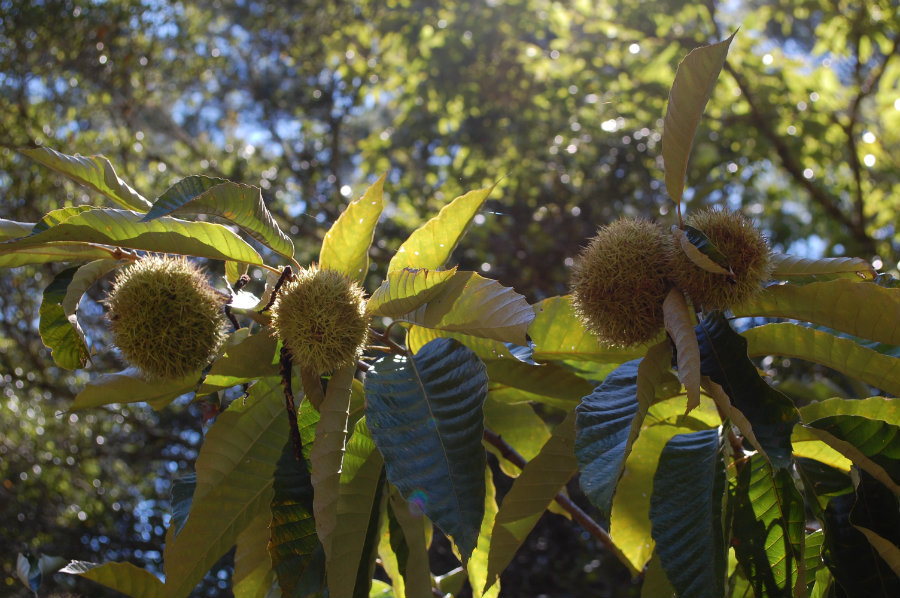
Those balls turn brown when they’re ripe and fall to the ground and will poke you straight through your tennis shoes if you wander too close. And if you happen to wear your favorite sparkly flip-flops you might as well hang it up.
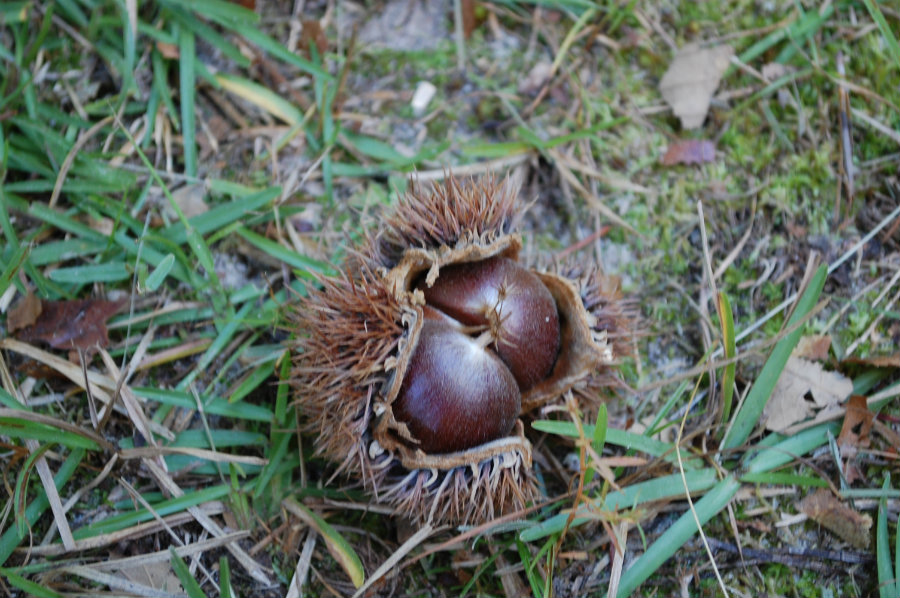
My husband’s curiosity finally got the best of him and he did some research and discovered that we had been blessed with a pair of hard-to-come-by chestnut trees! The song popped into my head and, BAM! Instant Christmas. I had visions of our little family gathered around the fireplace roasting chestnuts, just like the song says. Sigh … Instant Christmas.
Harvesting chestnuts is a lot harder than my experiences with pecans. I didn’t get any spankings this go-around but I did get quite a few pricks on my fingertips. I’d advise using tongs or a baseball glove or suckering someone else into picking them up and prying open the prickly balls to get the glossy, chestnut-colored nuts. I wonder, did the color get its name from the nut or did the nut get its name from the color?
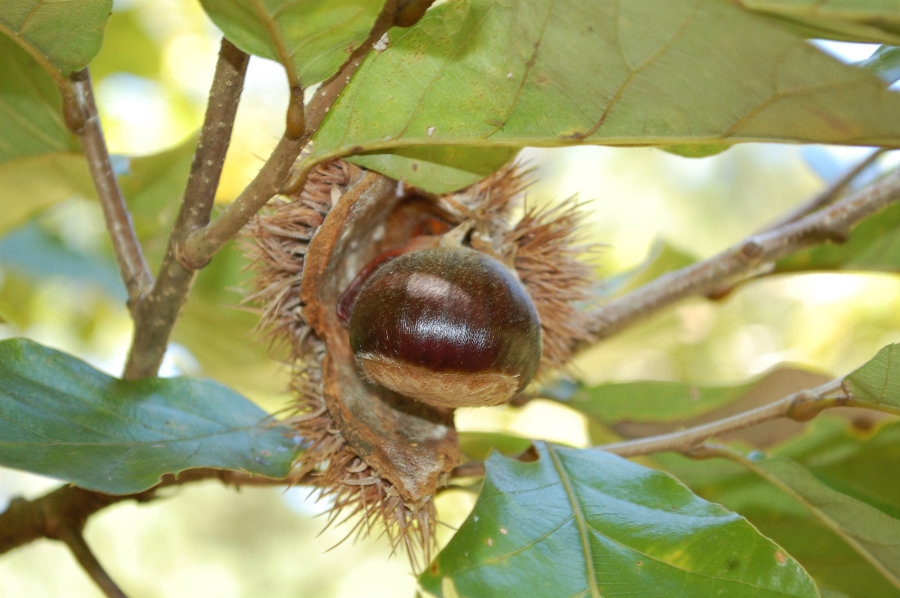
Anyway, we read that it’s easier to roast chestnuts in an oven so we gave that a shot and had pretty good results. I love any excuse to use my cast iron skillets so after cutting an “x” into the hulls of the nuts I roasted them in a 425 degree oven for 25 minutes.

You might want to let them cool for a few minutes before peeling off the hull.
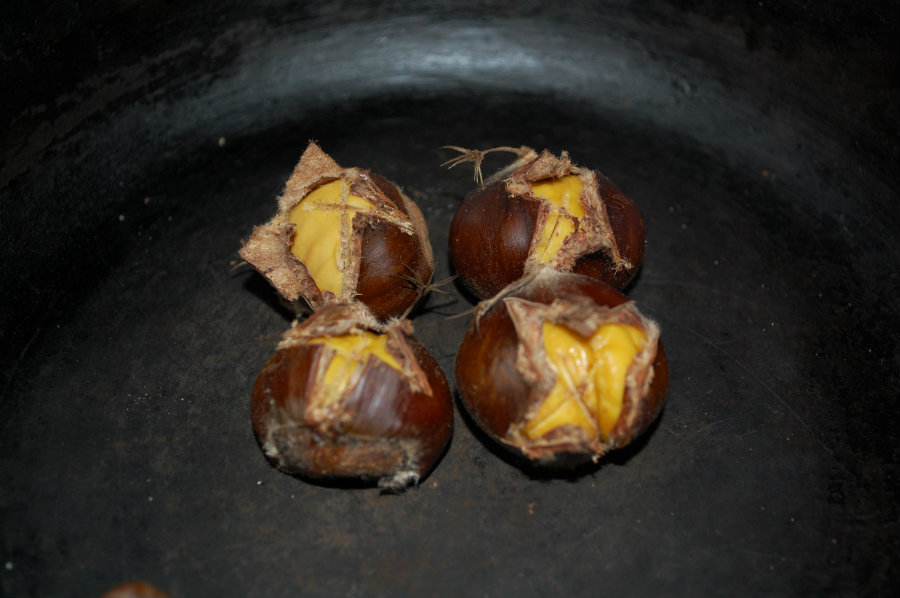
I’m a die-hard pecan/peanut girl and found the texture to be a little on the mealy side so I smashed them a bit and roasted them for another 5 minutes to give them more crunch.
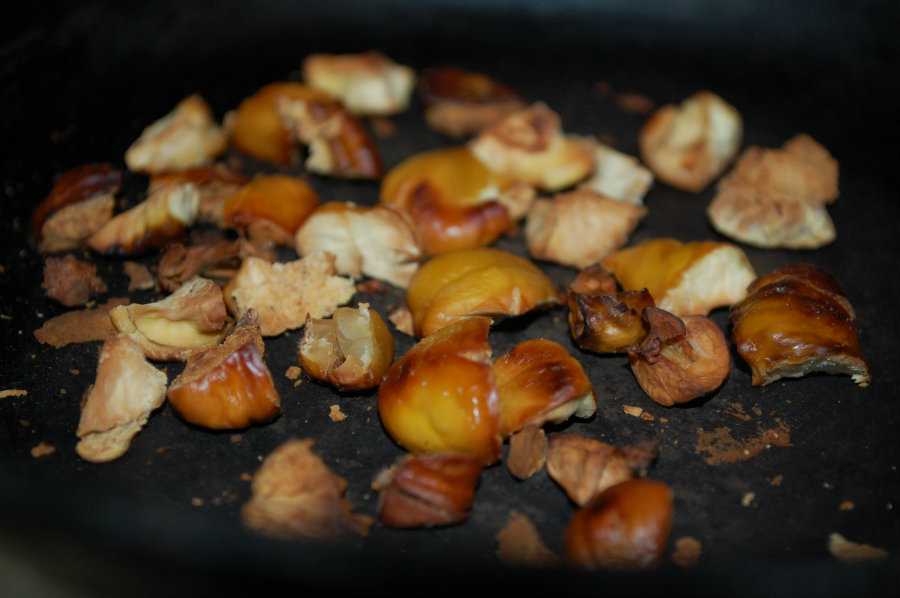
They came out toasty, nutty, slightly sweet and perfectly Christmas-y!
I have a new appreciation for “The Christmas Song” now, and an even greater love for our neighborhood, all thanks to those weird trees behind the blueberry bushes near the pond.

Are you dreaming of having adventures on your own country land? View rural land for sale throughout the South on our parent company's website, RaydientPlaces.com.


